Khiva/Khwarezm. Khiva was conquered by the Russian Empire in 1873 and although under Russian sovereignty, Khiva had a certain degree of independence. As such, they issued numerous coins with their rulers names inscribed on them.
As a result of the revolution in 1917, several territories under Russian control declared independence, and Khiva was no exception.
Khiva enjoyed independent rule from 1917 until the leaders Sayyid Abdullah and Junaid Khan were forced to abdicate in 1920.
Following this, the name was changed to the Khwarezm Soviet Peoples Republic. Khwarezm was once a powerful empire between the 11th and 13th centuries, and the name was temporarily restored between 1920 and 1924 under the Soviet order. In 1924, the Khwarezm republic was dissolved (along with other central Asian territories) and incorporated into the Soviet republic of Uzbekistan.
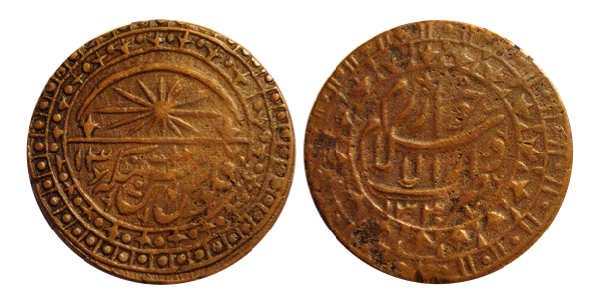
5 Tenge coin from the Khanate of Khiva date 1337 AH/1919 AD.
This was one of few coins issued during the temporary period of self rule.
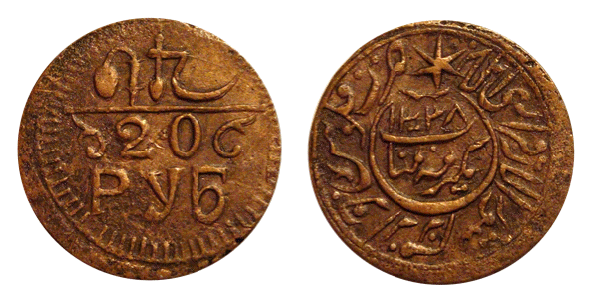
20 Ruble coin for the Khwarezm SPR dated 1338 AH/1920 AD. Ironically, although Russia was the
first country to adopt a Soviet government, the Khwarezm SPR was the first to issue Soviet coinage

25 Ruble coin also from the Khwarezm SPR dated 1339 AH/1921 AD.
The waning years of the Russian Empire.
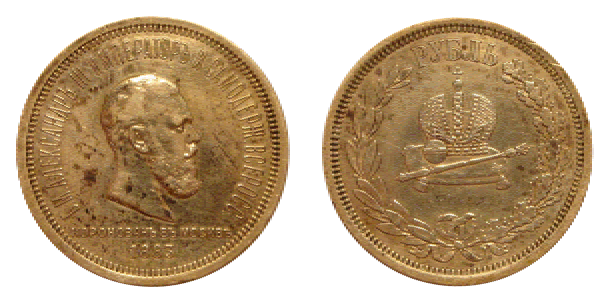
Coronation Ruble for Tsar: Alexander Romanov III dated 1883.
The coin shows Alexander's profile with Cyrillic legend giving his title, date and location of coronation (Moscow) on the obverse side.
The reverse shows Alexander crown and orb resting on a decorative cushion with the denomination in Cyrillic at the top.
It was during Alexander III's reign that Vladimir Lenin's brother (also named Alexander) was tried and hanged for participating in bomb plot to kill the tsar. It was this event that radicalized Lenin in his revolutionary pursuit.
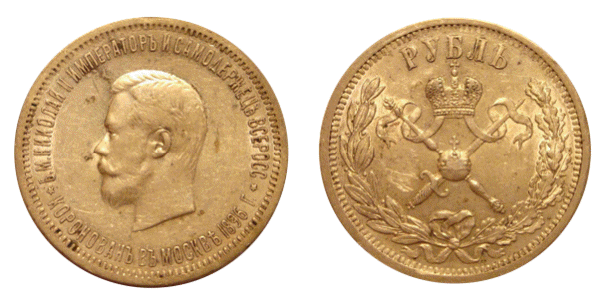
Coronation Ruble for Tsar: Nikolai Romanov II dated 1896.
The obverse shows Nikolai' profile with Cyrillic legend giving Nikolai's title, date and location of coronation (Moscow).
The reverse shows Nikolai ll's crown and orb along with scepter. sword and ribbon with the denomination in Cyrillic at the top.
Nikolai reigned as the last tsar of the Russian Empire, and was the catalyst that brought about the revolution of 1917.
Between the defeat suffered during the Russo-Japanese war in 1904. and Nikolai's aggressive stance during the first revolution in 1905,
was the powder keg that lead to his undoing in the second revolution twelve years later.
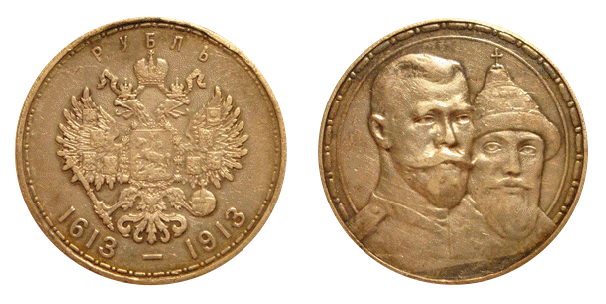
Jubilee Ruble marking the 300th Anniversary of the Romanov dynasty dated 1913.
The obverse shows the lesser imperial arms with the denomination written in Cyrillic and the dates 1613-1913.
The reverse shows both the first tsar, Mikail Fyodorovich Romanov I (1613-1645) and Nikolai II unbeknownst at the time was the last of
Romanov line.
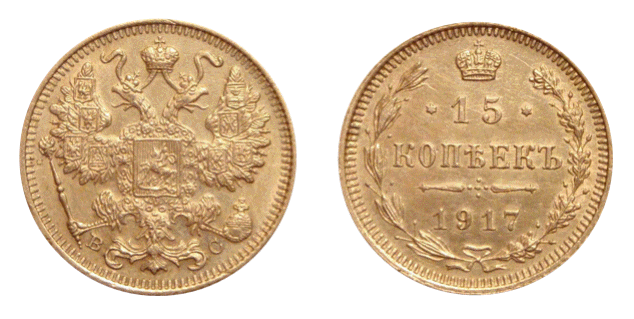
15 Kopek coin dated 1917.
This was the last imperial issue struck before the revolution and only had only four denominations 5,10,15 and 20 coins the 5 kopek coin being the rarest. Nikolai II and his family were assassinated the following year on July 17, 1918 by a Soviet regiment at Yekaterinburg (later Sverdlovsk) in the Urals.

